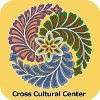If you’ve seen the flyers for UCSD’s Express to Success (ETS) Workshops, chances are you recognized a good idea. Who couldn’t benefit from more confidence, public speaking ability, and interpersonal relationship skills?
Moving large audiences with the power of my voice is a fantasy of mine. I dream about helping people realize their potential as human beings by speaking about life: pain, healing, love, friendship, well-being, and the power of soul. Content that delivers itself, so to speak. When I took some of my poetry to the stage however, I discovered that, in spite of my intentions, something else took over. My face would flush red (think raspberries), my breath would come up short, and my body would compose itself into strange flamingo postures. Who was this nerve-bound person?
I checked myself in to the 9-week Public Speaking seminar led by ETS director Sara Henry. My first presentation went well, but I cheated by reading a poem I was well-familiar with. My next presentation was more representative of my predicament. I had a story to tell, and every intention of a strong delivery. .. yet the front of the room found me rigid, and self-conscious. In this space, I couldn’t express myself freely. By the last presentation, however, I was considerably smoother (and happier). I am not sure if public speaking is like riding a bicycle, but it does remind me a lot of snowboarding. The first few times you go down the mountain on your butt. It takes many runs before you can stand/think on your feet, but once you’re up there and comfortable with your footing, you can fly. I’m not flying yet, but I am less red. I am also standing up straight now.
It’s been a wonderful opportunity to practice, experiment, and put myself thru my paces in a sea (or pond, rather) of supportive faces. I have gained a new level of awareness for the simple subtleties of communication we constantly take for granted: posture, tone, eye- contact, even content.
I would recommend this workshop to anybody who lives and works amongst other people. Even if you have no interest in standing on soap-boxes, you probably realize the benefit of being able to communicate with confidence to, say, a traffic cop. I would also recommend ETS workshops to anybody who has friends, family members, and/or lovers. How might relationships be deepened and strengthened, how might connections grow, if we were to pay attention and be deliberate in every word being communicated? The implications are tremendous.
Public speaking is only one of many programs offered by ETS. Check out their website for quarterly updates and schedules!
The way we communicate with others and with ourselves ultimately determines the quality of our lives.
-Anthony Robbins
-Anthony Robbins








